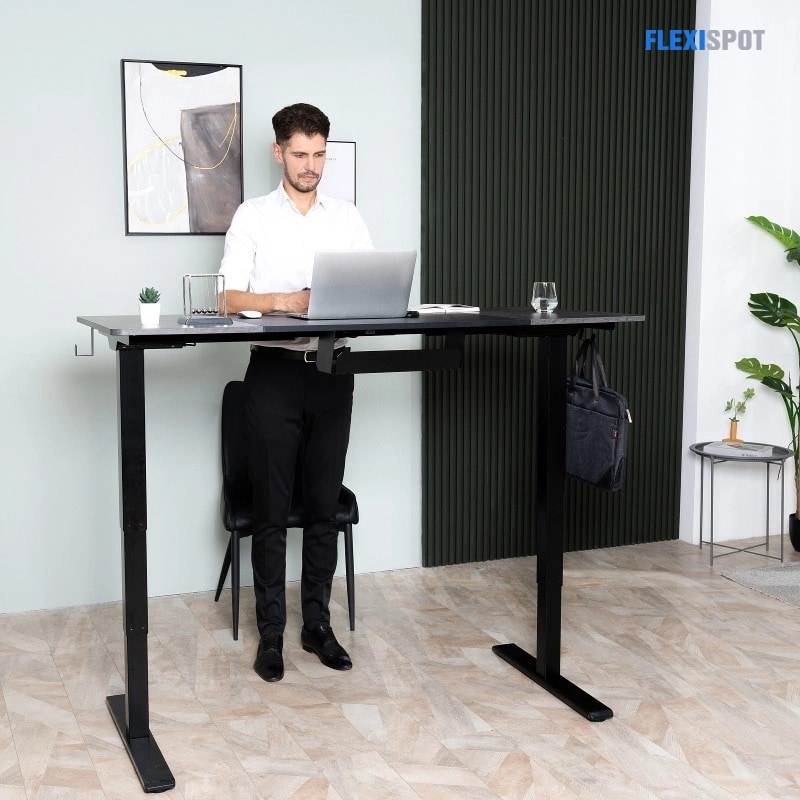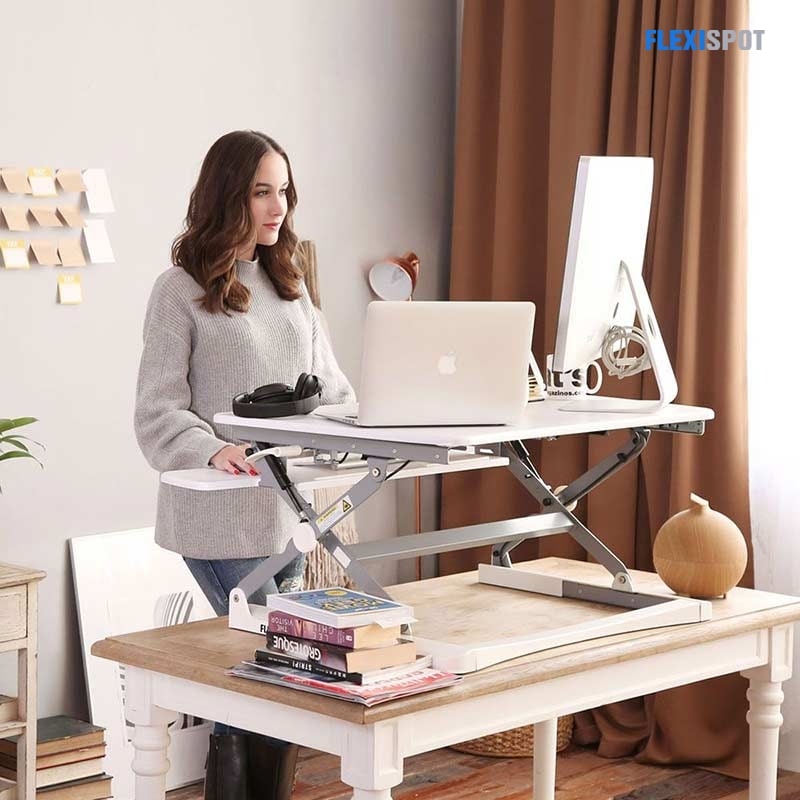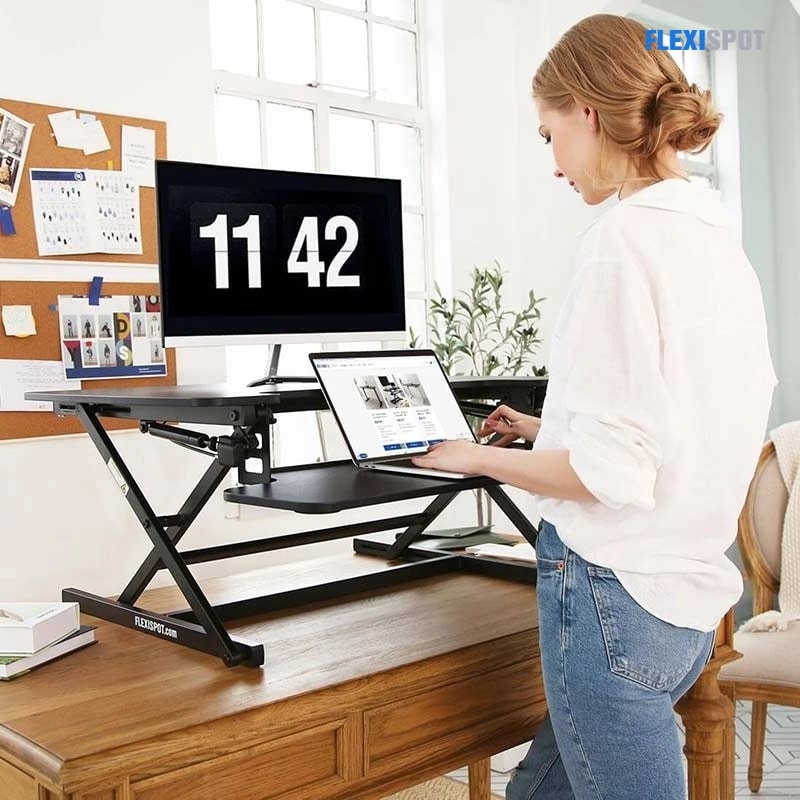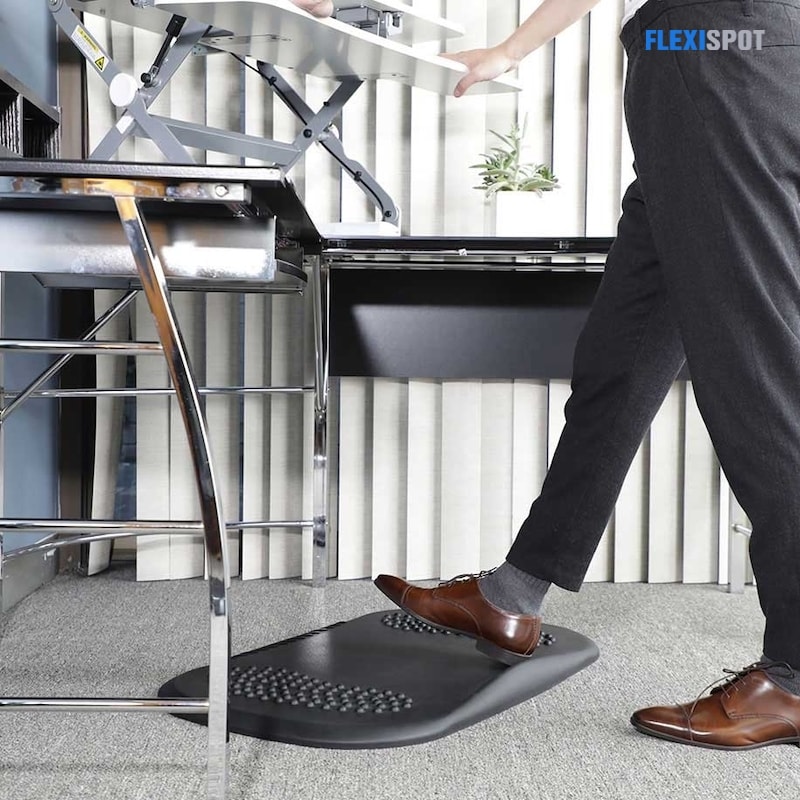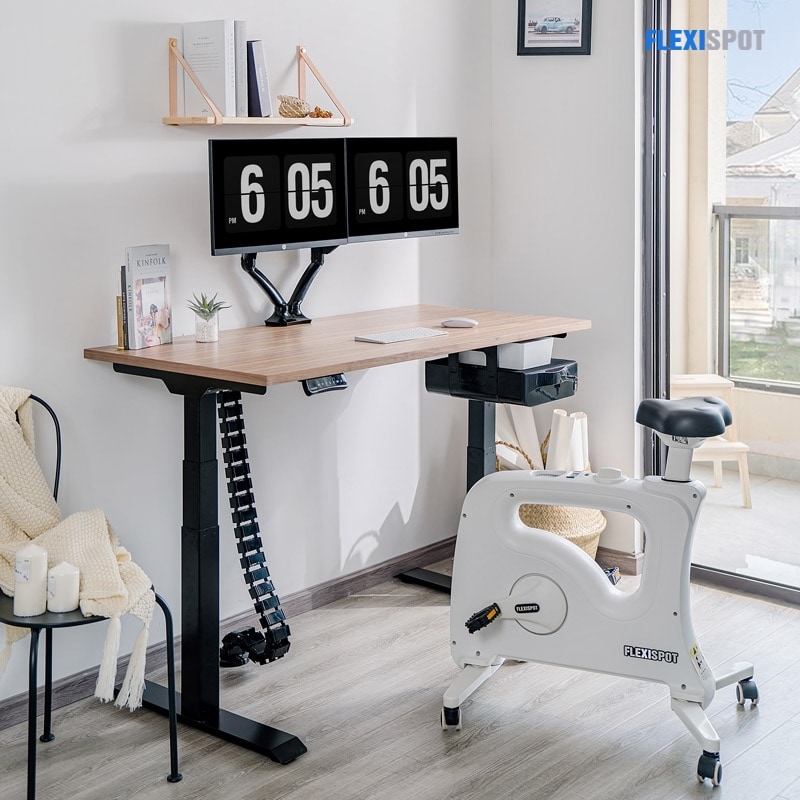Prolonged sitting isn't just unhealthy; it's downright deadly. The evidence is clear. Prolonged sitting has been scientifically proven to cause a whole slew of life-threatening health issues, including heart diseases, diabetes, stroke, high blood pressure, and even some cancers. It doesn't matter how much you love working on your laptop or binge-watching Netflix - you need to take some breaks, not only to maintain good physical health but also to keep yourself sane!
Standing desks, also referred to as sit-stand desks or sit-to-stand desks, cut down on your sitting time, enabling users to lead an active life and alleviate the severe effects of excessive sitting. In recent years, more and more companies have been focusing on the health of their employees. Standing desks have become popular in many office spaces as a result, with reports even indicating that sit-to-stand sales are outpacing those of traditional desk models!
Every day, more and more people are trying out standing desks to help them lead better work lives. And while the health benefits of these new devices seem appealing at first glance, many don't know how to use their desk correctly. Occasionally, people will make mistakes with how they use their standing desks. Luckily for you (or your hard-working employees), we are here to help by telling you about the most common errors so that they won't happen again! If one of these sounds like an issue at your company's office space or desk layout, then take a look through our solutions and get back in gear today.
Prolonged Standing
Prolonged standing is just as unhealthy as excessive sitting. They say even too much of a good thing can be dangerous. While a standing desk is an excellent solution when alleviating the effects of prolonged sitting, prolonged standing in itself poses a significant health risk as well. With the initial hype, motivation, and excitement that come with obtaining a standing desk, you may find yourself standing all the time at your new standing desk. This is a common phenomenon experienced by just about everyone when they acquire new gadgets. Try to remain calm, and remember that moderation is key.
Another angle to this problem occurs among users with manual standing desks or desks without a memory preset, which would allow you to revert to a user-ideal sitting or standing height seamlessly. In such cases, users find themselves standing for extended periods in an attempt to avoid interruptions that come with adjusting the desk to the preferred sitting height. In such cases, if the hassle feels a little too much, find a temporary station where you can sit and finish a particular task before adjusting the desk to a convenient sitting height to avoid prolonged standing.
Solution
The obvious solution here is to create a balance between sitting and standing. It's vital to intermittently switch between standing and sitting in the course of your workday to alleviate the health risks associated with excessive sitting and standing. Create a balance between standing, sitting and advisably add a little walking around to stretch out your muscles. Most ergonomists recommend a 2:1 sitting, standing ratio with minimal time in between them. For instance, if you sit for 20 minutes, you'll need to stand for 10 minutes. Then spice it up with a 2-minute walk or stretch session to break the monotony.
Another excellent solution to this problem is to get a height-adjustable standing desk with memory settings. These desks store your preferred height settings and allow you to transition between sitting and standing without a hassle seamlessly. With the simple push of a button, you can shift to your preferred sitting or standing desk height in no time.
The Adjustable Standing Desk Pro Series from FlexiSpot features an advanced keypad with 3 memory height presets and a programmable sit/stand reminder. It enables users to switch between their ideal sitting and standing positions with ease, plus get friendly alerts when it's time to stand or sit. This standing desk essentially offers a comprehensive solution to this and other standing desks usage problems.
Visit Here For More Details On Adjustable Standing Desk Pro Series
Wrong Positioning of the Computer Screen
There is such a thing as an ideal monitor position! Most standing desk users place their computer screens either too high or too low. This rings true for both the sitting and standing position. Improper screen positioning causes frequent neck and upper back pains. If your head needs to tilt up or down at your computer screen while standing, you’re likely straining your neck muscles and might eventually suffer from the effects of poor postures, such as upper back pain.
This particular problem is even worse with laptop users. It is not easy to maintain the correct posture when using a laptop placed on a standing desk since meeting the monitor at eye level means that your arms will need to stretch out slightly more than is comfortable. Typing will be a nightmare! Long term, this results in pain and discomfort, not to mention a significant drop in productivity.
Solution
To solve this problem, raise the computer screen to your eye level and slightly tilt it back to avoid having to slouch or angle your head to strenuous positions. A monitor mount is a very handy tool for this particular process.
If you're using a laptop on a standing desk, consider getting a laptop stand to raise your laptop screen about 8-inches off the desk. Alternatively, it would be better to have a separate ergonomic keyboard and mouse positioned below the laptop stand to save your arms from that unnecessary strain.
Wrong Desk Height: Too Low or Too High
In order to fully benefit from your standing desk, you have to set it just right. The height of your standing desk ultimately determines the positioning of all those essential accessories on top: monitors, keyboards, and more - but how do you know what's best? Suppose you find yourself experiencing frequent neck pain or wrist problems after long hours of work at a computer while using elevated surfaces like standing desks. In that case, chances are good that this is because they're not positioned correctly! On the same note, slouching while working or needing to support your elbows on the desktop is another clear indicator that the desk height is lower than what is defined as proper ergonomics.
Solution
Always adjust your desk to the correct height, whether you're standing or sitting. To find the right desk height, bend your elbows at a 90-degree angle, keeping your neck neutral and your wrist straight in front of you. Then adjust the standing desk height to align your forearms parallel with the desk surface. At the correct height, your hands should float over the keyboard with straight, relaxed wrists and your fingers hanging over the desk surface to meet the keyboard comfortably. The key takeaway; your wrist should be straight and relaxed, not inclined downwards or upwards.
Wearing Improper Footwear
Though many people consistently choose to wear uncomfortable high heels, they are not the most comfortable option when it comes to standing. Though you may think that your shoes will be great for sitting down, in reality, walking around is what causes discomfort and pain on other parts of the body as well. Choosing a supportive shoe while either seated or standing can help prevent these pains by giving your feet enough support, so they don't hurt after hours of wearing them!
Solution
Wearing high-quality, comfortable shoes that enable you to stand and walk with ease comfortably is essential. If your sense of fashion permits it, feel free to wear heels all day or wedges for office hours but preferably carry a pair of comfortable shoes as a backup for when your feet feel cramped, or you need to take a short walk outside during your break time.
Poor Standing Posture
Ergonomists are people that will talk your ear out on the detrimental effects of poor posture. They have long determined that there is a right posture for every activity; failure to which brings about its share of undesirable effects. Whether you’re standing, sitting, or lying down, poor posture has detrimental effects on one's health, including severe back pains, headaches, disrupted digestion, spine curvature, poor sleep, and poor blood circulation due to constricted blood vessels. It would be counterproductive to acquire a standing desk, only for the same standing desk to cause you to lower back pain, sprained wrists, and poor circulation from the “wrong standing posture.”
Solution
The obvious solution to this issue is maintaining the correct posture when standing or sitting behind your standing desk. To attain the proper stance, stand upright with a straight neck and relaxed shoulders. Your knees should be bent slightly but not locked so that they do not hyperextend past their natural position. If you find yourself slouching while working on your computer in a standing position, then you’re definitely not doing it right.
Not Using an Anti-Fatigue Mat
Nowadays, it seems like you can't find a floor that isn't hard- concrete, hardwood, tiles, etc. And while some people might enjoy the feeling of standing on concrete for hours on end without any pain or discomfort, this cycle of repetition catches up with you. Walking or standing on these hard floors causes intense pressure on your soles and puts a strain on your joints. What happens at the end of a day is you will start to feel soreness in your joints, primarily the knees, which in the long term, may discourage you from using the standing settings on your standing desk.
Solution
No matter how good of shape you're in, standing on hard surfaces for hours can tire your feet and legs quickly. This is because the pressure from being rooted to one spot stresses muscles that are not used during walking or running. Consider using an anti-fatigue mat when working at a desk on concrete floors, wood floors, or tiles (or any other hard surface) that could leave your toes sore after prolonged periods of time spent standing still - as it's purported to provide extra cushioning while also encouraging movement by giving you different positions where you can place your feet. They also allow for micro-movement of your feet and toes, which promotes blood circulation and your overall health.
The Adjustable Standing Desk Pro Series Corrects Some of Your Standing Desk Mistakes
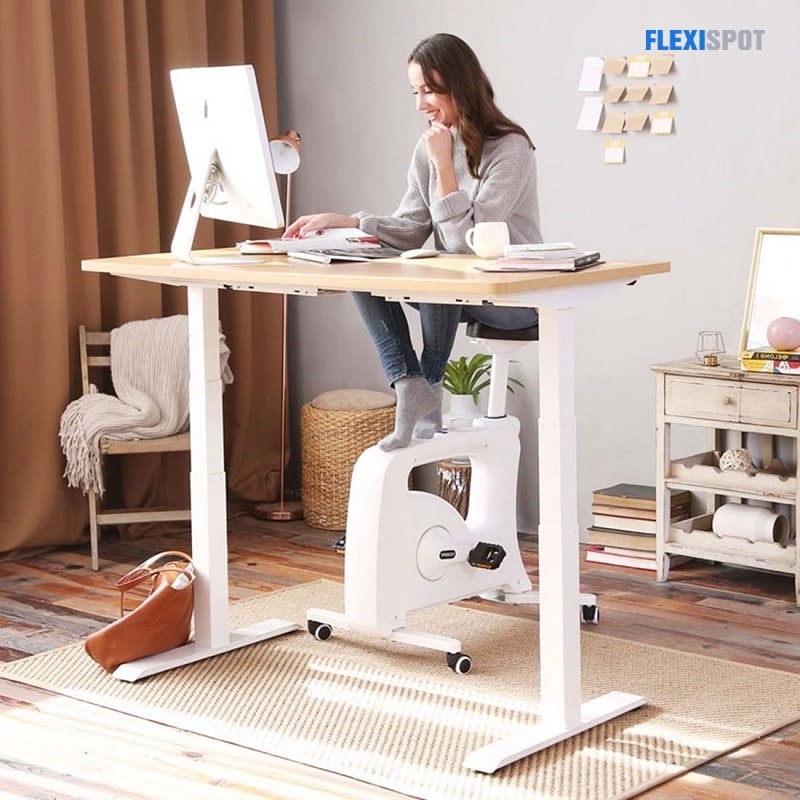
The Adjustable Standing Desk Pro Series offers incredible standing and sitting experiences, allowing you to lead a healthy work-life. The standing desk features an advanced dual-motor lifting system ensuring seamless sitting/standing and standing/sitting transition via the simple touch of a button. It has a higher loading capacity thanks to the powerful dual motors providing an impressive lifting speed of 1.4''/s even under the full weight capacity of 275 lbs.
The Adjustable Standing Desk Pro Series dual-lifting system is quiet, quick, and steady, providing maximum stability even at the highest setting. The standing desk corrects some typical standing desk mistakes like prolonged standing. The desk integrates a programmable sit/stand reminder system that gives you intuitive alerts when sitting or standing. This functionality comes in handy to prevent excessive sitting and standing.
What's more, the Standing Desk Pro features height memory with three memory height presets. This feature saves you the hassle and time that would have been spent adjusting the desk to your preferred sitting and standing height. With memory height presets, you're less likely to adjust the desk to an incorrect height, hindering you from experiencing the full benefits of your standing desk. Set your ideal sitting and standing height once, and you're good to go. You have virtually no excuse not to!
In summary, the Adjustable Standing Desk Pro enables you to easily avoid excessive sitting or standing while working. Besides, it offers you a preferred height for comfortable working and allows you to smoothly transition between sitting and standing or vice versa within seconds and without interrupting your workflow.
The Bottom Line
Standing desks are the latest ergonomic trend in office spaces, aimed at facilitating better productivity and preventing health consequences associated with sedentary living. Loads of evidence indicate that standing desks work wonders for your body, including reducing these negative side effects of excessive sitting and improving efficiency at work! However, like any other product, they must be used correctly to reap their benefits fully - you can't just stand all day or slouch over because then it will become a problem as well.
Before you use a standing desk, it's important to educate yourself on how they work and what mistakes are common. The Adjustable Standing Desk Pro is user-friendly so that you can avoid some of these more commonly made errors when using one for the first time! Some things like poor posture while standing up at your new desk may happen naturally if you're not paying attention, but having the knowledge beforehand allows you to consciously make the necessary changes in order to reap the full benefits.

